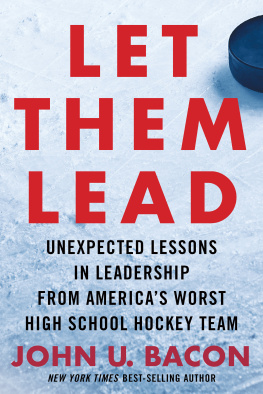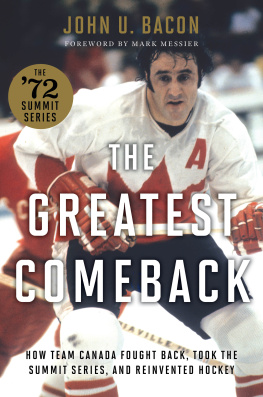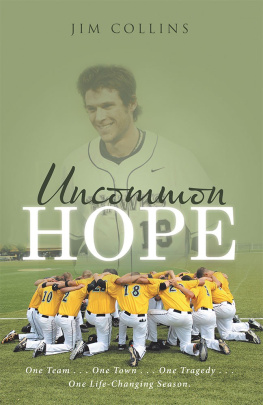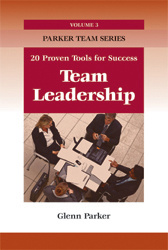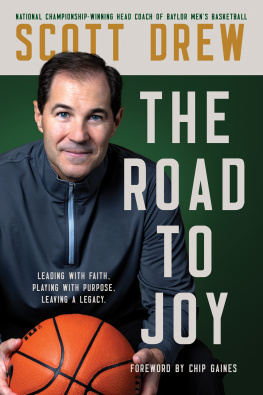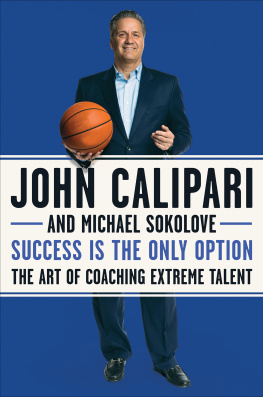Copyright 2021 by John U. Bacon LLC
All rights reserved
For information about permission to reproduce selections from this book, write to or to Permissions, Houghton Mifflin Harcourt Publishing Company, 3 Park Avenue, 19th Floor, New York, New York 10016.
hmhbooks.com
Library of Congress Cataloging-in-Publication Data
Names: Bacon, John U., 1964 author.
Title: Let them lead : unexpected lessons in leadership from Americas worst high school hockey team / John U. Bacon.
Description: Boston : Houghton Mifflin Harcourt, 2021. | Includes index.
Identifiers: LCCN 2021004077 (print) | LCCN 2021004078 (ebook) | ISBN 9780358533269 (hardcover) | ISBN 9780358581741 ( CD ) | ISBN 9780358581918 (audio) | ISBN 9780358540212 (ebook)
Subjects: LCSH : LeadershipCase studies. | ManagementCase studies. | Hockey teamsMichiganAnn ArborCase studies. Classification: LCC HD 57.7 . B 3228 2021 (print) | LCC HD 57.7 (ebook) | ddc 658.4/092dc23
LC record available at https://lccn.loc.gov/2021004077
LC ebook record available at https://lccn.loc.gov/2021004078
Cover design by Mark Robinson
Author photograph John Schultz
Cover Image: francisblack / Getty Images
v2.0921
To the players, the parents, and the assistant coaches,
who created an experience worth writing about,
and especially to Mike Lapper Lapprich,
the heart and soul of our team
Authors Note
This book is ostensibly about a high school boys ice hockey team, but its really about how to help men and women of all ages and backgrounds reach their potential.
My advice is simple: you have to create high expectations immediately, establish deep mutual trust, and then help your people take over. To do all that, you need to give them a ton of encouragement, reward their achievementsgreat and smalland then give them the power to run the show.
Is it easy? No. This approach requires a lot from them, and even more from youincluding personal courage. But Im convinced this is the best way to motivate todays workersand once everyones pulling in the same direction, the rewards are endless.
This is not to say youre reading a book by a know-it-all. Far from it. Youll see that, when I was hired to turn around Ann Arbor Huron High Schools hockey team, I had a strong vision for what I wanted the team to become, but not much else. I didnt have shelves stacked with the latest business books or a binder full of strategies, tactics, and proven theories for rebuilding the program. Instead, often after my attempts to solve a stubborn problem had failed, I got a lot of ideas from my mentors, my colleagues, and my players, or I simply came up with something I figured was worth trying. We didnt turn it around through some grand strategy, but through trial and error.
I know these ideas work, because Ive tried them.
Ive coached eighteen seasons of high school soccer, baseball, and hockey, including the only coed squad in our high schools all-boys intramural softball league (we finished second of eleven teams); the University of Michigan womens ice hockey team; and the Ann Arbor Huron High School River Rats, the subject of this book. Ive spent twenty of my last thirty-five years teaching in private and public high schools, community colleges, and Miami (Ohio) University, Northwestern University, and the University of Michigan, where the students awarded me the Golden Apple for excellence in teaching. Ive worked as a corporate trainer for Ford, Chrysler, and Subaru, and for the past decade, through speaking and consulting, Ive helped organizations around the country excel. I now work part-time for Insight Global, a $2.5 billion company with offices in sixty-two North American cities and a staff that is 70 percent women.
So dont be fooled: this book isnt about high school hockey any more than the movie Rocky is about boxing or Star Wars is about outer space. You dont need to know anything about sports to follow the lessons here.
While this book does not claim to be a manual on diversity, equity, and inclusion, the ideas, policies, and practices offered here will be of direct help with these vital issues, particularly the chapters on hiring and the importance of being fair, giving everyone a chance, and listening to your peoples problems. All are essential to leading a diverse, inclusive team on which everyone feels respected and valued.
Likewise, although most of this story takes place years before Covid-19 hit our shoresprompting millions of people to work remotelythe pandemic has made the principles presented here more pertinent than ever. One of our teams foundational beliefs applies here: Your character is what you do when you think no one is watching. Since most managers can rarely watch their employees work these days, they need to be able to count on their people. This book will help you create an enduring culture of trust.
The best proof comes from our players themselves. When I started writing this book in 2020, I scoured the four thousand pages of notes Id kept in fourteen computer journals and drew information from seven boxes filled with game files, statistics, programs, letters, and even videotapes. Those resources have allowed me to accurately recount more quotes, scenes, and stories than youd expect in a retrospective. Any mistakes are naturally mine alone.
But one of the special features of this book, I believe, emerged only after I sent my former players and assistant coaches their passagesto confirm or correct thema couple months before my deadline. I was asking them to do what wed already done on the ice years before: work together to create the best possible results. Once again, they greatly exceeded my expectations, sending back 150 pages of stories, memories, and insights that only they could have provided. Countless times they told me things I had remembered differently, hadnt remembered at all, or could never have known. To say I was pleasantly surprised by their contributions is to understate the case considerably.
They even threw in a bonus: because they are now in their midthirties, they were able to describe how their experiences on our team had shaped their lives since. I believe youll find this aspect of the book especially valuable, because the vast majority of the fifty-four players I coached are now leaders themselves, responsible for dozens and sometimes hundreds of people, in an amazing array of fields. Their positions include vice president of an engineering firm, executive chef of the University of Michigans Residential Dining Division, public affairs adviser for cybersecurity and infrastructure at the Department of Homeland Security, junior high school social studies teacher, and general manager at Uber Freight, as well as plenty of doctors, lawyers, and managers.
In fact, these days Im working for one of my previous captains, Stevie Wasik, now a vice president at the aforementioned Insight Global, the national staffing company based in Atlanta. Stevie recently started the companys Compass Division, teaching leadership and culture to Fortune 500 companies, using many of the principles he learned in the Huron hockey program. Thats right. I work for a guy I first met when he was just a fourteen-year-old kid who came up to my elbowand nothing could make me happier.
Most of my players are now married with kids, so theyre coaching their sons and daughters hockey teams. Because I became a husband at forty-nine and a father at fifty-one, many of their kids are the same age as our five-year-old son Teddy, or older. When my former players come over for our annual barbecue, they bring their wives and kids, we set up play dates, and they give me parenting adviceand I have to take it.
Theyve seen enough of the world to know what works and what doesnt. Im confident youll agree that their voices add immeasurably to this storya feature I believe is unique to this book.

